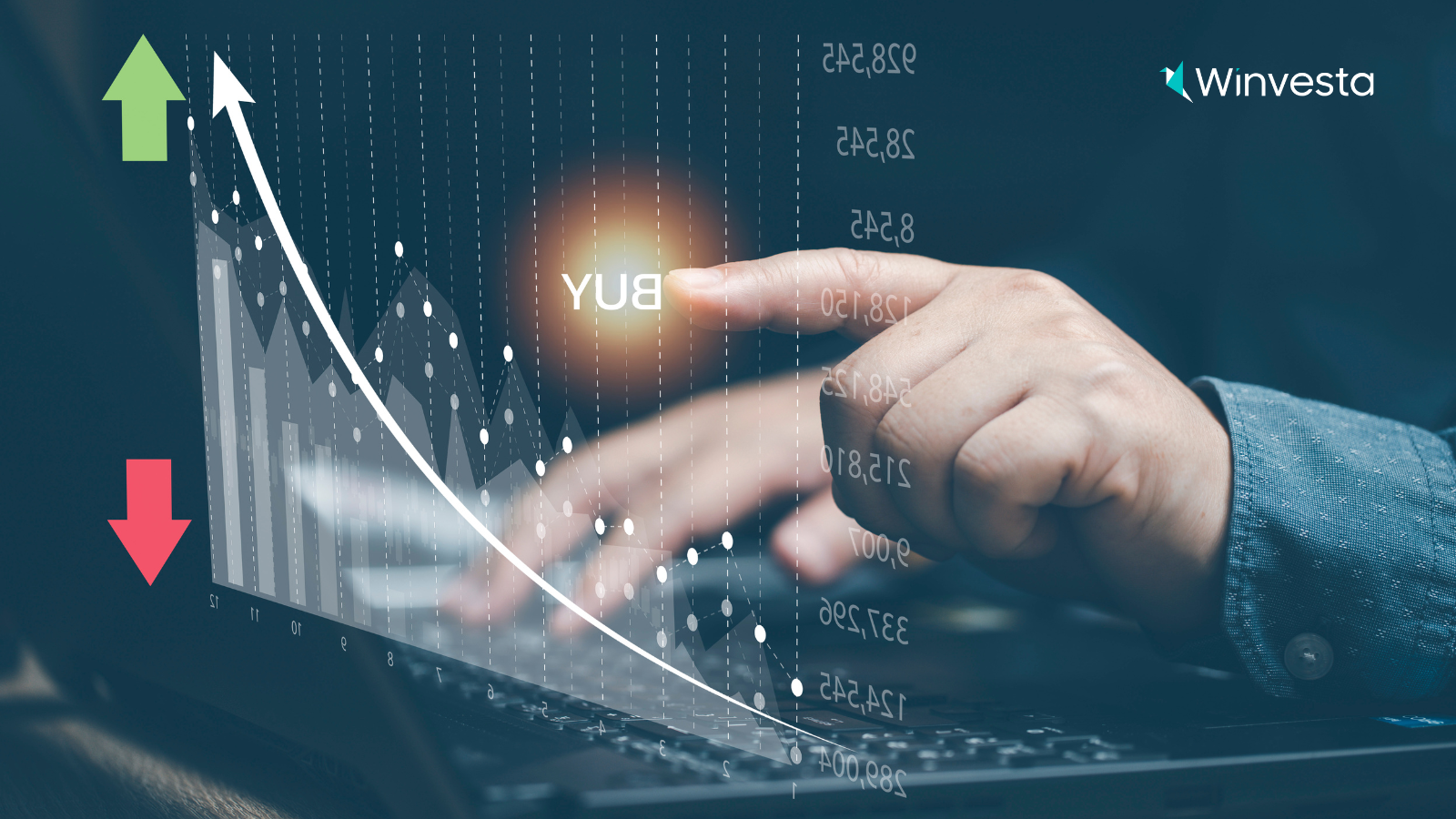Contents
Understanding risk vs. reward in investing: A beginner’s guide
6 minutes read
31 March 2025

Investing isn’t just about picking winners—it’s about understanding the game you’re playing. At its core, every investment involves a tradeoff between risk (the chance of loss) and reward (the potential gain). Knowing how to evaluate this relationship allows you to make decisions that align with your financial goals and comfort level.
Imagine you’re offered two investment options. One promises a steady 3% annual return, while the other offers a potential 15% return—but there's also a chance you could lose money. Which would you choose? Your answer depends not just on the numbers, but on your risk tolerance, financial situation, and timeline. That’s why understanding the risk-return tradeoff is crucial—it’s the foundation for building a smart and sustainable investment strategy.
What is risk in investing?
In investing, risk is the uncertainty about the outcome. Every investment carries some level of risk, even the “safest” ones. What differs is the type and degree of risk involved.
Major types of investment risks:
-
Market risk
Driven by overall market conditions—think economic downturns, inflation, or political instability. Even solid companies can lose value during a market crash.
-
Credit risk (default risk)
Common in bonds and fixed-income products. It’s the risk that the issuer (company or government) won’t pay back what they owe.
-
Liquidity risk
Refers to how quickly you can sell an asset without losing money. Real estate, art, or rare collectibles can be hard to sell quickly, especially in a downturn.
-
Inflation risk
The danger that your money loses purchasing power over time. If your investment grows at 2% annually but inflation is 3%, you’re effectively losing money.
-
Interest rate risk
Especially important for bond investors. When interest rates rise, the market value of existing bonds usually falls.
-
Currency risk
If you invest in foreign assets, fluctuations in exchange rates can affect your returns.
Let’s say you invest in a foreign tech company listed in a developing country. You face market risk (if the tech industry crashes), currency risk (if the foreign currency weakens), and liquidity risk (if it’s hard to sell the shares). Multiple layers of risk are in play—even for what may look like a promising opportunity.
What is reward in investing?
Reward is the benefit or return you expect from putting your money to work. It could be income, appreciation in value, or both. But remember—higher potential rewards usually come with higher risks.
Types of rewards:
-
Capital gains
The profit made when an investment is sold for more than it was bought. This is common in stocks and real estate.
-
Dividends
Regular payments from companies to shareholders, often seen in established, blue-chip stocks.
-
Interest income
Earnings from bonds or savings accounts—more predictable but often lower in value.
-
Rental income
Earnings from leasing property. This offers both monthly income and potential property appreciation.
-
Compound growth
Returns earned on both the original investment and the accumulated earnings. Over time, this creates exponential growth.
Key consideration
Not all rewards are immediate. Long-term investments often require patience but may deliver more value over time. Investing in an S&P 500 index fund might not wow you in a year, but over a decade or two, it historically delivers solid returns with moderate risk.
The risk-return tradeoff: Understanding the balance
The risk-return tradeoff means that to achieve higher returns, you must be willing to accept a greater chance of loss. Conversely, playing it too safe might limit your earning potential.
Let’s explore different asset classes and where they fall on the risk-return spectrum:
| Asset type | Risk level | Potential reward |
|---|---|---|
| Government bonds | Low | Low |
| High-grade corporate bonds | Medium | Moderate |
| Index funds | Medium | Moderate to high |
| Individual stocks | High | High |
| Cryptocurrencies | Very high | Very high |
| Real estate | Medium to high | Medium to high |
Key point
There’s no “perfect” investment. The goal is to build a mix that reflects your financial goals, personality, and timeline. Some people sleep well knowing their money is safe in bonds, while others thrive in high-risk, high-reward environments.
🧮How to calculate risk vs. reward
The risk-reward ratio helps you decide if an investment is worth it. It compares what you’re risking with what you stand to gain.
Formula:
Risk-reward ratio = potential loss / potential gain
Examples:
-
Scenario 1
You risk losing $200 to gain $600.
- Ratio = 1:3 → Great potential
-
Scenario 2
You risk $500 to gain $400.
- Ratio = 1.25:1 → Not favorable
📌 Best practice
Aim for a ratio of 1:2 or better. That way, even if you’re wrong half the time, you still come out ahead in the long run.
Aligning risk and reward with your investment goals
Your goals and personal circumstances should always guide how much risk you're willing to take. An aggressive portfolio might look tempting, but it’s not worth the sleepless nights if it doesn’t fit your comfort zone.
Consider these factors:
- Time horizon
- Short-term goals: less risk, more liquidity
- Long-term goals: more room for risk, time to recover from losses
- Financial situation
- Higher income or more savings? You can afford to take more risk.
- On a tight budget? Keep risk low to avoid jeopardizing your savings.
- Personality and emotional tolerance
- Do market dips make you anxious? Consider conservative strategies.
- Comfortable with ups and downs? You may be better suited to riskier investments.
🎯 Pro tip
Revisit your strategy once a year or after big life changes (job, marriage, kids, retirement). Your portfolio should evolve with your life.
Risk management tools to protect your investments
Even the best investments can go south unexpectedly. That’s where risk management tools come in handy—they help reduce damage without killing your growth potential.
Popular tools and techniques:
- Diversification
- Spread your investments across industries, asset classes, and geographies.
- Example: combine U.S. stocks, international ETFs, bonds, and real estate for balanced exposure.
- Asset allocation
- Decide how much of your portfolio should go into stocks, bonds, cash, or other assets based on your risk tolerance.
- Rebalancing
- Regularly adjust your portfolio to keep your desired risk level.
- Example: if stocks now make up 80% of your portfolio due to gains, rebalance back to 60% if that’s your target.
- Stop-loss orders
- Set a limit where your position will automatically sell if prices drop too far. Great for avoiding emotional selling or panic.
- Hedging
- Advanced technique using options or futures to offset potential losses. Often used by experienced or institutional investors.
🛡️ Bonus tip
Keep an emergency fund. It prevents you from dipping into investments during financial stress, which often leads to losses.
Common mistakes to avoid when weighing risk vs. reward
Even seasoned investors slip up now and then. What separates smart investors from the rest is their ability to learn from mistakes and avoid common pitfalls.
Watch out for:
-
Chasing hot trends
Jumping on the bandwagon of hype-driven assets like meme stocks or volatile crypto without research can backfire quickly. If it sounds too good to be true, it probably is.
-
Lack of diversification
Putting all your eggs in one basket increases the chances of a total loss. A well-diversified portfolio is like a safety net—it spreads out the risk.
-
Trying to time the market
Even the pros struggle with this. Missing just a few "good days" can significantly reduce your returns. Consistency beats timing.
-
Failing to review your portfolio
Life changes. So should your investments. Neglecting regular reviews can leave you overexposed to risk or underperforming assets.
-
Letting emotions drive decisions
Fear and greed are the enemies of long-term investing. Make sure your decisions are based on strategy, not headlines or market panic.
💡 Lesson:
Discipline and self-awareness are just as important as financial knowledge when it comes to investing successfully.

Ready to own a piece of the world’s biggest brands?
- Invest in 4,000+ US stocks & ETFs
- Fractional investing
- Zero account opening fees
- Secure and seamless
Start investing in just 2 minutes!

Build your global portfolio.
.png)
Invest in companies you love, like Apple and Tesla.

Track, manage, and grow your investments.
Make the risk-reward equation work for you
Let’s wrap this up with some straight talk: you can’t eliminate risk, but you can learn to manage it. And by understanding your reward potential, you can invest with purpose instead of fear.
Building wealth takes more than just picking the right stocks or funds. It takes understanding how much you're willing to risk, how much you expect to gain, and what you're investing for in the first place. Whether you're aggressive, conservative, or somewhere in between, there’s a strategy that fits your unique profile.
🧭 Remember:
- Define your goals clearly
- Know your risk tolerance and capacity
- Use the risk-reward ratio to guide decisions
- Diversify, rebalance, and review regularly
- Stick to your plan and be patient
You’re in control of your financial future. When you approach investing with knowledge, discipline, and a long-term mindset, risk becomes something to work with—not something to fear.
Frequently asked questions about Risk vs. reward in investing


Contributed by Denila Lobo
Denila is a content writer at Winvesta. She crafts clear, concise content on international payments, helping freelancers and businesses easily navigate global financial solutions.



